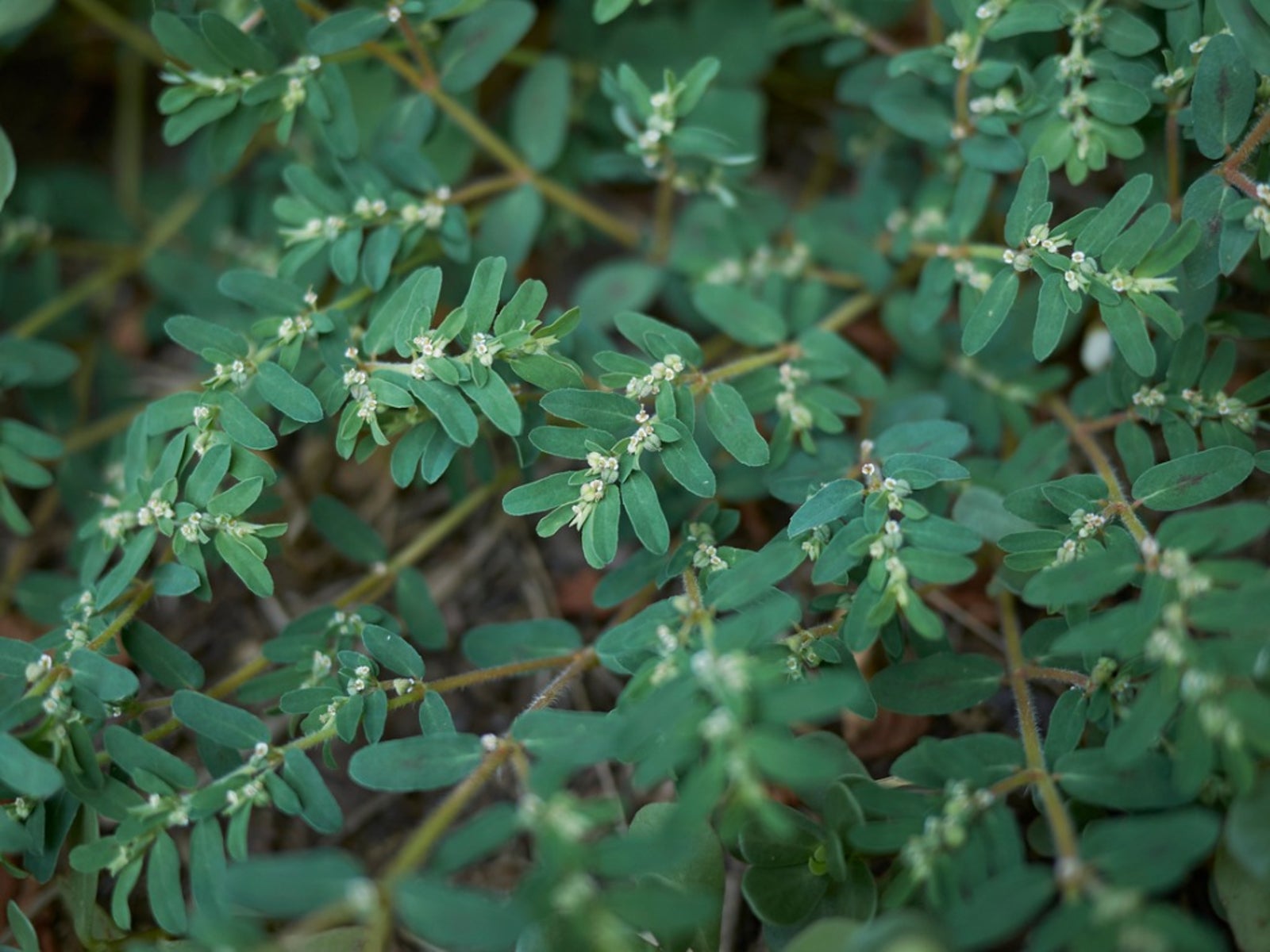Tips For Spotted Spurge Control


Spotted spurge weed can quickly invade a lawn or garden bed and make a nuisance of itself. Using proper spotted spurge control can not only eliminate it from your yard, but can also help prevent it from growing in your yard in the first place. Keep reading to learn how to get rid of spotted spurge.
Spotted Spurge Identification
Spotted spurge (Euphorbia maculata) is a dark green plant with red stems that grows low to the ground in a mat-like fashion. It will grow outwards from the center in a rough wagon wheel shape. The leaves are oval shaped and have a red spot in their center (which is why this spurge is called spotted spurge). The flowers on the plant will be small and pink. The entire plant has a hairy appearance. Spotted spurge has a milky white sap that will irritate the skin if it comes in contact with it.
How to Get Rid of Spotted Spurge
Spotted spurge often grows in poor, compacted soil. While killing spotted spurge is relatively easy, the hard part is keeping it from coming back. The tap root of this plant is very long and its seeds are very hardy. This weed can and will grow back from either root pieces or seeds. Because of the spotted spurge weed's mat-like nature, hand pulling is a good option for removing spotted spurge from the lawn or flower beds. Be sure to wear gloves due to the irritating sap. Make sure that you pull this weed before it has a chance to develop seeds; otherwise, it will spread rapidly. After you have hand pulled the spotted spurge, watch for it to start growing again from the tap root. Pull it again as soon as possible. Eventually, the tap root will use up all of its stored energy trying to regrow and will die completely. Heavily mulching with either newspaper or wood mulch is also an effective method of spotted spurge control. Cover ground with spotted spurge with several layers of newspaper or several inches of mulch. This will prevent the spotted spurge weed seeds from germinating and will also smother any plants that have already started growing. You can also use herbicides, but many herbicides will only work for spotted spurge control while the plants are young. Once they reach a mature size, they can resist many forms of weed killers. When using herbicides for killing spotted spurge, it is best to use them in late spring or early summer, which is when spotted spurge will first sprout. One of the few herbicides that will work on mature spotted spurge is a non-selective type. But be careful, as this will kill anything it comes into contact with, and the spotted spurge may still regrow from the roots, so check frequently for regrowth and treat the plant as soon as possible if you see it. Pre-emergent sprays or granules can also be used for spotted spurge control, but these will only be effective before the seeds have sprouted. As a last resort, you can try solarizing the area where the spotted spurge has taken root. Solarization of the soil will kill the spotted spurge and its seeds, but will also kill anything else in the soil. Note: Chemical control should only be used as a last resort, as organic approaches are safer and much more environmentally friendly.
Gardening tips, videos, info and more delivered right to your inbox!
Sign up for the Gardening Know How newsletter today and receive a free copy of our e-book "How to Grow Delicious Tomatoes".

Heather Rhoades founded Gardening Know How in 2007. She holds degrees from Cleveland State University and Northern Kentucky University. She is an avid gardener with a passion for community, and is a recipient of the Master Gardeners of Ohio Lifetime Achievement Award.
-
 Try The Trend – Turn Any Bed Into A Keyhole Garden With This Clever In-Ground Composter
Try The Trend – Turn Any Bed Into A Keyhole Garden With This Clever In-Ground ComposterKeyhole gardening is an efficient and sustainable practice that saves space. Get started on this DIY project quickly and easily with an in-ground composter.
By Bonnie L. Grant
-
 4 Superfast Composting Methods: Turn Waste Into Garden Gold In 30 Days Or Less
4 Superfast Composting Methods: Turn Waste Into Garden Gold In 30 Days Or LessTry the fastest composting methods to turbocharge your pile and transform kitchen scraps and garden waste into finished compost in just a few weeks.
By Mary Ellen Ellis